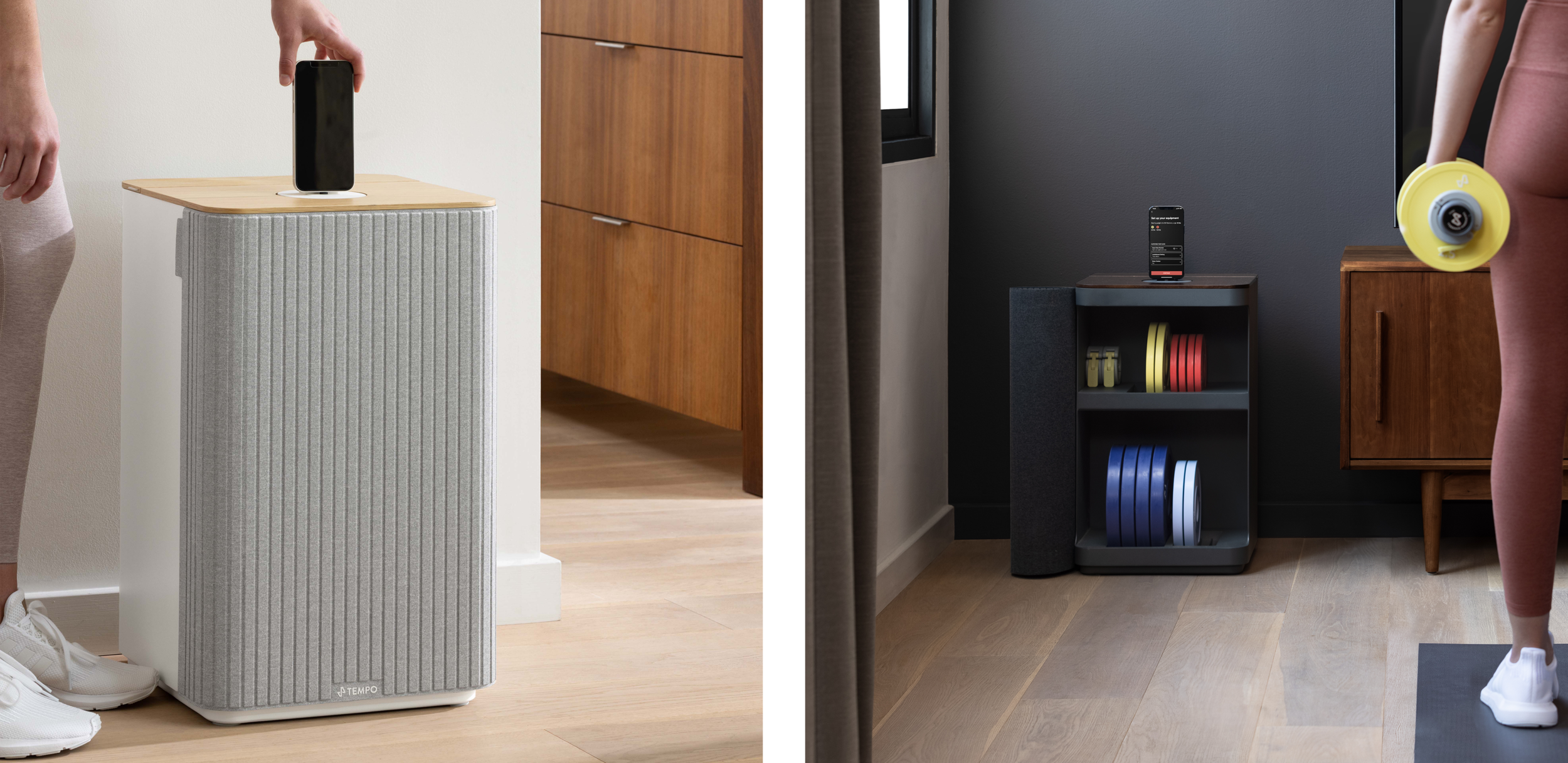To work with its HDMI hookup, Move would be positioned in proximity to a TV, at a fixed height that enabled an accurate field of vision. That led us to investigate furniture that conventionally filled that space, including credenzas, side tables, and hi-fi audio, for design inspiration.
Finally, Move would incorporate the following equipment components:
- Four each of 1.25-pound, 2.5-pound, and 5-pound weight plates (Four 10-pound weight plates, sold separately, are also designed to fit into the console.)
- Two dumbbells
- Four weight collars
- A heart-rate monitor
- The Core, a removable dock, which includes a phone backstop, HDMI cable and port, and a charging dongle
Although this is Move’s final list of elements, at the beginning of the design process, many of the specifics were evolving in real time. Requirements around dimensions, cable selections, styles of phone, angles of view, and more would continue to change through the months ahead.







